
Mohandas Karamchand Gandhi was an Indian lawyer, anti-colonial nationalist, and political ethicist who employed nonviolent resistance to lead the successful campaign for India's independence from British rule. He inspired movements for civil rights and freedom across the world. The honorific Mahātmā, first applied to him in South Africa in 1914, is now used throughout the world.
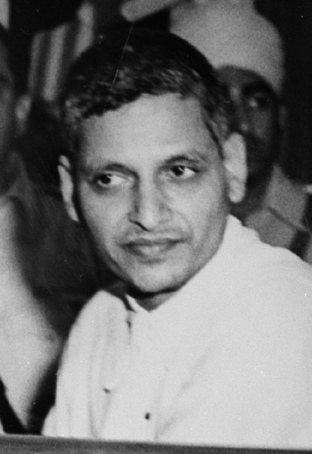
Nathuram Vinayak Godse was the assassin of Mahatma Gandhi. He was a Hindu nationalist from Maharashtra who shot Gandhi in the chest three times at point blank range at a multi-faith prayer meeting in Birla House in New Delhi on 30 January 1948.

Ghanshyam Das Birla was an Indian businessman and member of the Birla Family.
The Birla family is an Indian business family connected with the industrial and social history of India.
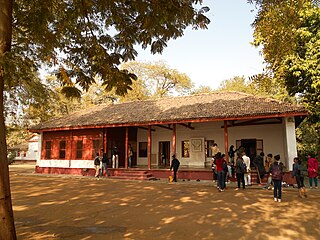
Sabarmati Ashram is located in the Sabarmati suburb of Ahmedabad, Gujarat, adjoining the Ashram Road, on the banks of the River Sabarmati, 4 miles (6.4 km) from the town hall. This was one of the many residences of Mahatma Gandhi who lived at Sabarmati (Gujarat) and Sevagram when he was not travelling across India or in prison. He lived in Sabarmati or Wardha for a total of twelve years with his wife Kasturba Gandhi and followers, including Vinoba Bhave. The Bhagavad Gita was recited here daily as part of the Ashram schedule.

Kanhaiyalal Maneklal Munshi, popularly known by his pen name Ghanshyam Vyas, was an Indian independence movement activist, politician, writer from Gujarat state. A lawyer by profession, he later turned to author and politician. He is a well-known name in Gujarati literature. He founded Bharatiya Vidya Bhavan, an educational trust, in 1938.

Raj Ghat is a memorial complex in Delhi, India. The first memorial was dedicated to Mahatma Gandhi where a black marble platform was raised to mark the spot of his cremation on 31 January 1948 and consists of an eternal flame at one end. Located on Delhi's Ring Road, a stone footpath leads to the walled enclosure that houses the memorial. Later the memorial complex was expanded to include memorials for other prominent Indian leaders including Jawaharlal Nehru, Lal Bahadur Shastri, Indira Gandhi, Rajiv Gandhi, Chandra Shekhar and Atal Bihari Vajpayee.
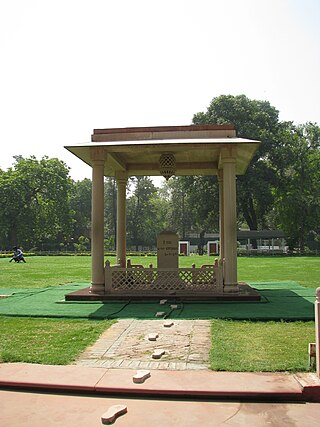
Mohandas Karamchand Gandhi was assassinated on 30 January 1948 at age 78 in the compound of The Birla House, a large mansion in central New Delhi. His assassin was Nathuram Godse, from Pune, Maharashtra, a Hindutva activist, a member of the Rashtriya Swayamsevak Sangh (RSS), a right-wing Hindu paramilitary organization as well as a member of the Hindu Mahasabha.
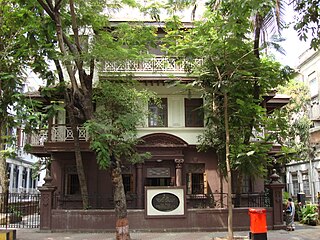
Mani Bhavan is a museum and historical building dedicated to Gandhi, situated at Laburnum Road in the Gamdevi precinct of Mumbai. Mani Bhavan was the focal point of Gandhi's political activities in Mumbai between 1917 and 1934.

Sushila Nayyar, also spelt 'Nayar', was an Indian physician, a lifelong follower of Mahatma Gandhi, and a politician. She played a leading role in public health, medical education and social and rural reconstruction in India. She became Gandhi's personal physician and an important member of his inner circle. Later, she wrote several books based on her experiences. Her brother, Pyarelal Nayyar, was the personal secretary to Gandhi. In post-Independent India, she contested elections for political office and served as India's health minister.
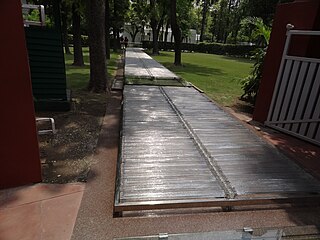
Indian prime minister Indira Gandhi was assassinated at 9:30 a.m. on 31 October 1984 at her residence in Safdarjung Road, New Delhi. She was killed by her Sikh bodyguards, Satwant Singh and Beant Singh, in the aftermath of Operation Blue Star by the Indian Army between 1 and 8 June 1984 on the orders of Gandhi. The military operation was to remove Sikh militant Jarnail Singh Bhindranwale and other Sikh separatists from the Golden Temple of Harmandir Sahib in Amritsar, Punjab, the holiest site of Sikhism. The military action resulted in the death of many pilgrims as well as damage to the Akal Takht and the destruction of the Sikh Reference Library.
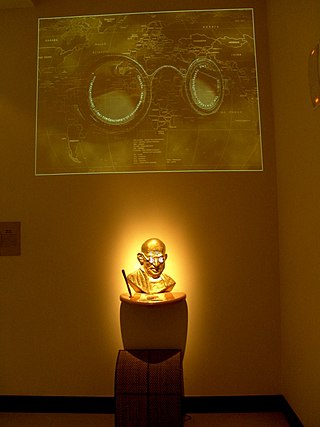
The Eternal Gandhi Multimedia Museum is a digital multimedia museum established in 2005. It is located at Gandhi Smriti, formerly Birla House, the site where Mohandas Karamchand Gandhi was assassinated. The museum presents historical records of Gandhi's life, and aims to revive and redefine the values by which India obtained freedom.

Jagdish Chandra Jain was a scholar, indologist, educationist, writer, and freedom fighter during the freedom struggle of India. He authored over 80 books on a variety of subjects, including Jain philosophy, Prakrit literature, and Hindi textbooks for children. Jain was the chief prosecution witness in Gandhi's murder trial. He repeatedly tried to warn the government of the conspiracy to assassinate Mahatma Gandhi, which became to known to him after Madan Lal Pahwa, a Punjabi refugee and one of the conspirators of the murder of Mahatma Gandhi, confided to him of their plan. Jain's attempts to warn the government met deaf ears. He recounted his personal experiences in two books: I Could Not Save Bapu and The Forgotten Mahatma. He died from cardiac arrest in July 1993 in Bombay at the age of 84.

The National Gandhi Museum or Gandhi Memorial Museum is a museum located in New Delhi, India showcasing the life and principles of Mahatma Gandhi. The museum first opened in Mumbai, shortly after Gandhi was assassinated in 1948. The museum relocated several times before moving to Raj Ghat, New Delhi in 1961.

Madhu Khanna is an Indian scholar based in Delhi who works on Indic studies, Religious Studies and Tantric studies. She is a well-known expert on the goddess centric Śakta tantric traditions of India. At present she serves as the Director and founding trustee of Tantra Foundation and Shrikunja. She is also currently serving as a subject expert to the Acarya Shankar Sanskritik Ekta Nyas, set up by the culture department of the Madhya Pradesh government for their Omkareshwar Project. At present she also serves in the academic council of Nalanda University and in the fellowship council of the Indian Institute of Advanced Studies, Shimla. She has many research papers as well as several books and exhibition catalogues to her credit. She has contributed to three national projects, as well as several research projects for the Indira Gandhi National Centre for the Arts (IGNCA).
The light has gone out of our lives is a speech that was delivered ex tempore by Jawaharlal Nehru, the first Prime Minister of India, on January 30, 1948, following the assassination of Mahatma Gandhi earlier that evening. It is often cited as one of the greatest speeches in history.
Kanu Gandhi was an Indian photographer. He was a grandnephew of Mahatma Gandhi who lived with him in several of his ashrams and was a member of his personal staff. He is best remembered as Gandhi's photographer, recording many moments of Gandhi's life on film from 1938 until his assassination in 1948. Following Gandhi's death, Kanu and his wife Abha moved to Rajkot where they ran a rural centre named after Kasturba Gandhi. Abha was one of the companions with Gandhi at Birla House Delhi, when Godse shot Gandhi.

Tees January Marg is a marg (road) in New Delhi, Delhi, India. It was formerly called Albuquerque Road. The name of the road, 30 January, commemorates the death of Mohandas Gandhi on 30 January 1948.

Gopal Vinayak Godse was a Hindutva activist convicted of conspiring to assassinate Mahatma Gandhi in 1948.


















